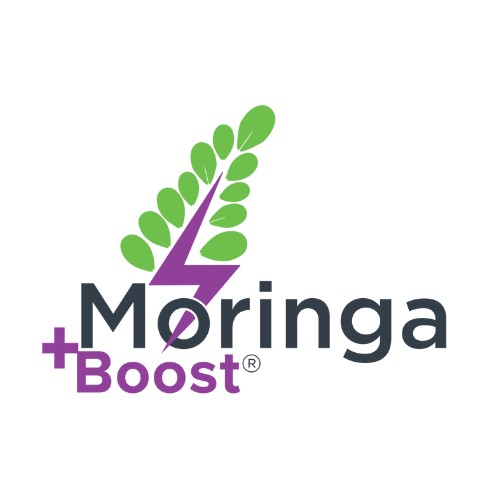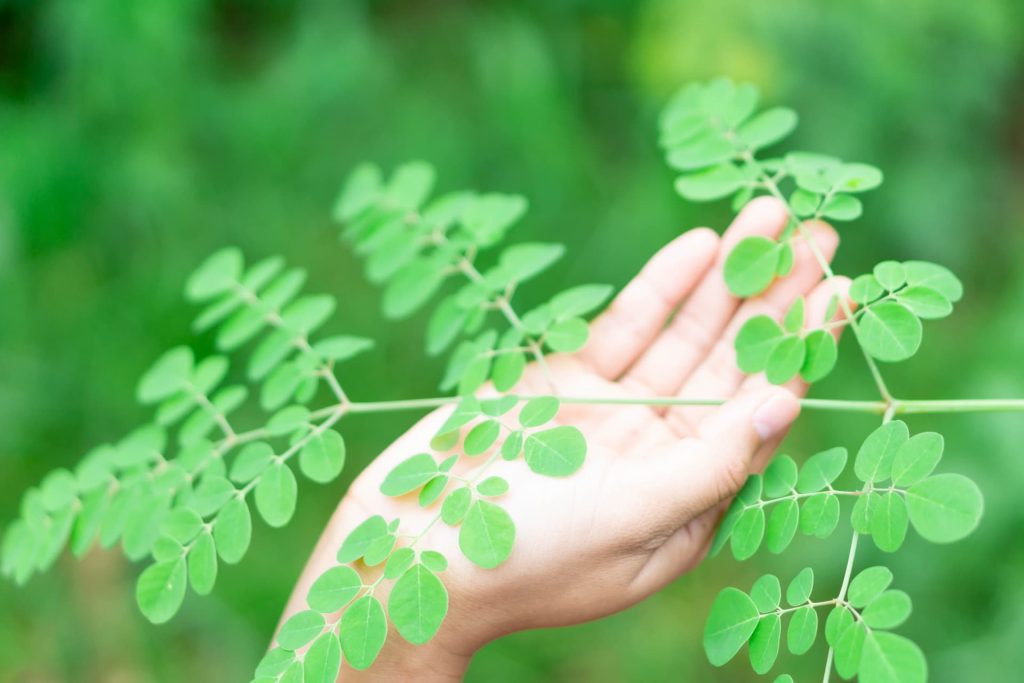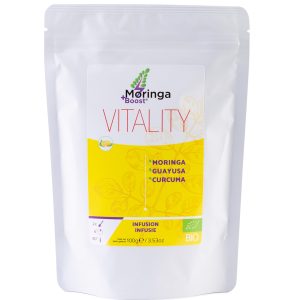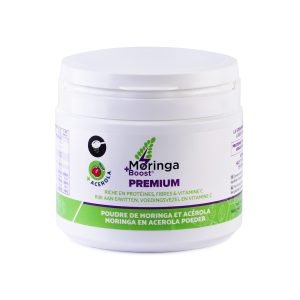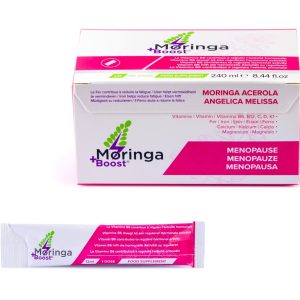Diabetes has become a global epidemic, affecting millions of people worldwide. This chronic disease, characterized by high blood sugar levels, requires constant management and special attention to diet.
However, there are natural solutions that can help keep blood sugar levels under control. One such solution is moringa, a plant widely studied for its health benefits, including its influence on blood sugar levels.
● Moringa: A treasure trove of nutrients
Among the medicinal plants studied for diabetes, moringa stands out for its exceptional nutritional profile. Before exploring in depth the role of this plant in the management of this disease, it’s important to understand what it is and why it’s considered a superfood.
Moringa oleifera L., also known as the miracle tree, originated in India, but now grows in many tropical and subtropical regions of the world, and has recently been cultivated in southern Europe. All parts of this tree, from leaves to roots, have been used for medicinal purposes for centuries.
It’s a nutritional powerhouse, packed with essential vitamins such as vitamin A, vitamin C, vitamin E and various B vitamins. It is also rich in minerals such as calcium, potassium, iron and magnesium. What’s more, this plant is an excellent source of protein and essential amino acids, making it invaluable for vegetarians and vegans.
But what makes this plant particularly interesting for people with diabetes is its ability to regulate blood sugar levels. Considered a superfood, it is rich in essential nutrients that support overall health.
● Moringa and Blood Sugar
The relationship between nutrition and diabetes is undeniable, and this natural supplement is positioned as a functional food in this context. Blood sugar control is facilitated by moringa consumption, which helps reduce postprandial blood sugar peaks. This dietary supplement has shown promising results in reducing insulin resistance, a common problem in type 2 diabetes.
Several scientific studies have been carried out and validated by the European Health Authorities and the National Institute of Health (USA) to understand how this natural supplement acts on sugar metabolism in the body. Here are some key mechanisms by which moringa can help maintain stable blood sugar levels.
In the face of the hyperglycemia epidemic, this plant is proving to be a valuable ally thanks to its natural hypoglycemic properties. Blood sugar management is crucial for diabetics, and this dietary supplement offers a natural solution for stabilizing blood glucose levels.
Reduced insulin resistance
Type 2 diabetes is often associated with insulin resistance. This condition occurs when cells don’t respond effectively to insulin, a hormone produced by the pancreas that regulates blood sugar levels. As a result, glucose accumulates in the blood. Studies have shown that moringa can help improve insulin sensitivity, helping to reduce insulin resistance. This means that
cells become more receptive to insulin, enabling glucose to be used more efficiently.
Reduced carbohydrate absorption
One of the ways moringa helps keep blood sugar levels stable is by reducing carbohydrate absorption. When you eat carbohydrates, your digestive system breaks them down into glucose, which is then absorbed into the bloodstream. This can lead to blood sugar spikes after meals. This plant has been shown to slow the absorption of carbohydrates, which can help stabilize blood sugar levels after meals.
Protection of pancreatic beta cells
The beta cells of the pancreas play an essential role in regulating blood sugar levels. They are responsible for producing insulin, a hormone that enables cells to absorb glucose from the blood. In people with type 2 diabetes, these beta cells can be damaged, leading to insufficient insulin production. Moringa has shown protective properties for these cells, which may benefit people with hyperglycemia by preserving their ability to produce insulin.

● Practical use
Incorporating moringa for health into your diet can contribute to better blood sugar regulation, a vital aspect in the management of diabetes. Now that we understand how it can positively influence blood sugar levels, it’s time to explore how to incorporate this super plant into your diet.
Moringa powder in smoothies
One of the most popular ways to use this plant is in powder form. Simply add one or two teaspoons of Moringa & Acerola PREMIUM Powder to your morning smoothie. This small amount is enough to give you a significant dose of nutrients while helping to stabilize your blood sugar levels. The taste of the powder is slightly spicy, which adds a pleasant kick to the foods you add to your favorite smoothies. MoringaBoost PREMIUM Moringa & Acerola Powder also contains acerola powder, adding extra Vitamin C to your breakfast.
Moringa pesto
Mix 1 teaspoon of Moringa & Acerola MoringaBoost PREMIUM Powder with 2 tablespoons of extra-virgin olive oil, a handful of toasted pine nuts, 1 tablespoon of grated Parmesan, salt and pepper to taste. Blend and gently pour over your tomato-mozzarella, mixed salad or pan-fried greens.
Moringa leaf infusion
Another way to use this plant is to prepare an infusion.
So why not start the day with a MoringaBoost VITALITY infusion?
Based on Moringa, Guayusa and Curcuma, it has been created to provide the antioxidants and energy needed to spend a comfortable, dynamic day, strengthening the immune system and helping to lower blood sugar levels.
A quick reminder of the properties of these three pillars of VITALITY infusion:
Used since the dawn of time in Ayurvedic medicine, Moringa is rich in protein, potassium, vitamin A and antioxidants. It also contains 20 amino acids, including 8 essential ones such as Leucine, essential for muscle rebuilding.
Rich in caffeine, amino acids, vitamins and antioxidants, Guayusa helps improve concentration and boost energy. Guayusa contains theobromine, which helps reduce fatigue and stimulate adrenalin, and L‑Theanine, which increases serotonin and dopamine production.
These precious ingredients are complemented by Turmeric, which contains powerful antioxidants and offers extraordinary anti-inflammatory properties.
Scented with lemongrass and lemon zest, and sweetened with a light touch of Stevia, a hot mug in the morning and another in the early afternoon will give you the antioxidants and energy you need for the whole day!
Tip: infuse 2 teaspoons of MoringaBoost VITALITY infusion per 250 ml of water at 80° for 6 minutes.
The result is a light, refreshing drink that can be an excellent alternative to tea or coffee. This infusion can help regulate blood sugar levels, in addition to providing a healthy dose of nutrients.

● Moringa-based dietary supplements
Natural supplements for diabetes are gaining in popularity, and this one is at the top of the list thanks to its beneficial effects on blood sugar levels.
Depending on seasonal or age-related needs, Moringa supplements in capsule or gel form are also part of the MoringaBoost brand range. IMMUNE SYSTEM capsules, to be taken at the start of winter, and SENIORS and MÉNOPAUSE gel sticks are highly effective options, approved by the Health Authorities, to help you pass these milestones serenely.
● Conclusion: Precautions and medical consultation
While moringa can be beneficial for blood sugar management, it’s essential to talk to your healthcare professional before making any significant changes to your diet, especially if you’re already taking diabetes medication.
This dietary supplement may interact with certain medications, which may require you to adjust your treatment. Your doctor can help you develop a hyperglycemia management plan that incorporates moringa safely and effectively.
● References
- Randomized Controlled Study: Effect of Moringa oleifera Leaf Capsules on Glycemic Control in Therapy-Naïve Type 2 Diabetes Patients: A Randomized Placebo Controlled Study — PubMed
- Moringa leaf supplementation: Moringa oleifera Leaf Supplementation as a Glycemic Control Strategy in Subjects with Prediabetes — MDPI
- Review of current evidence: Moringa oleifera and glycemic control: A review of current evidence and possible mechanisms — Wiley Online Library
